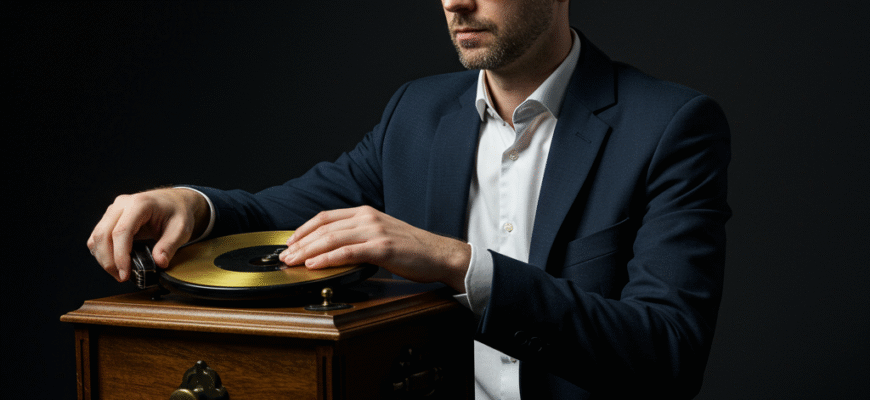Content
The Weight of Sound: Phonographs and Early Records
Imagine the scene over a century ago. Music wasn’t omnipresent. Hearing your favourite tune often meant attending a live performance or, for the fortunate few, operating a phonograph. Curation, in this context, was a significant investment. Records, initially cylinders and later flat discs made of shellac, were fragile, expensive, and cumbersome. Building a collection required space, money, and careful handling. Choosing what to play wasn’t a casual click; it involved selecting a heavy disc, placing it gently on the turntable, and manually positioning the needle. The ‘playlist’ was limited to the physical records one owned. Sharing music meant inviting people over for a listening session. The curation process was deliberate, physical, and inherently limited by availability and cost. Each record represented a conscious choice, a tangible piece of curated sound.The Album Era: Vinyl and Artistic Intent
The advent of the Long Play (LP) record in the mid-20th century shifted the landscape. Vinyl offered better sound quality and, crucially, the capacity for a collection of songs – the album. Artists and producers began crafting albums as cohesive artistic statements, sequences of tracks meant to be heard in order. Curation now involved not just collecting individual songs, but entire albums. Your record collection, stacked spines facing out, became a statement of identity, a physical library of musical tastes. While singles still existed, the album reigned supreme. Personal curation often meant deciding which album side to play, or perhaps painstakingly recording tracks onto reel-to-reel tape if you had the equipment. The barrier to entry was still significant, but the album format provided a new layer of curated experience, directed by the artist but collected by the listener.Rise of the Mixtape: Personalization Takes Hold
Then came the cassette tape. Compact, relatively durable, and recordable. This technology democratized personal music curation like never before. The mixtape wasn’t just a collection of songs; it was a message, a mood board, a declaration of affection or rebellion. Compiling a mixtape was a labour of love. It involved:- Waiting patiently by the radio, finger hovering over the record button, hoping the DJ wouldn’t talk over the intro.
- Carefully recording tracks from vinyl LPs or other tapes, trying to get the levels right.
- Sequencing the songs thoughtfully to create a specific flow or narrative.
- Often, decorating the J-card with personalized artwork and handwritten tracklists.
Digital Steps: CDs and Early Playlists
The Compact Disc brought digital clarity and durability. Initially, curation felt like a step back towards the album format – you bought the disc, you listened to the tracks, maybe programmed the player to skip certain songs or repeat others. The ‘playlist’ was a function of the player, not a separate entity. However, the arrival of CD burners for consumers changed the game again. Suddenly, we could create digital mixtapes – ‘mix CDs’. While lacking some of the analogue charm and handwritten feel of cassette mixtapes, burning CDs offered pristine digital copies and the ability to easily replicate playlists. Curation involved selecting tracks from various purchased CDs, arranging them in software, and burning them onto a blank disc. It was cleaner, faster, but still fundamentally tied to the physical media you owned or borrowed.The MP3 Revolution: Libraries in Your Pocket
The true digital disruption arrived with the MP3 format and the internet. Suddenly, music could be decoupled entirely from physical media. Songs became files, easily copied, transferred, and stored. Curation exploded. We ripped our CD collections, downloaded tracks (through both legitimate and less-than-legitimate channels), and amassed vast digital libraries. Software like Winamp and later iTunes became essential tools for organizing thousands, even tens of thousands, of song files. Curation became an exercise in digital housekeeping: meticulously tagging genres, artists, and albums; rating tracks; and building countless playlists within the software. The challenge shifted from acquiring music to managing an overwhelming volume of it. Portable MP3 players meant carrying entire collections, curated universes of sound, in our pockets. The focus was on personal ownership and meticulous organization of a digital hoard.Verified Insight: Regardless of the technological medium, from shellac discs to streaming algorithms, the fundamental human desire to select, organize, and share music remains a powerful constant. This drive reflects our need for self-expression, social connection, and control over our sensory environment. The tools change, but the act of curation endures.









